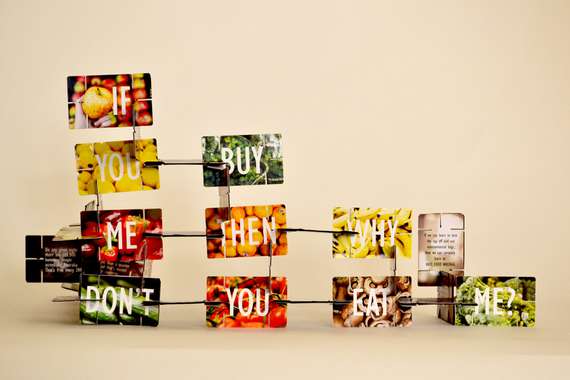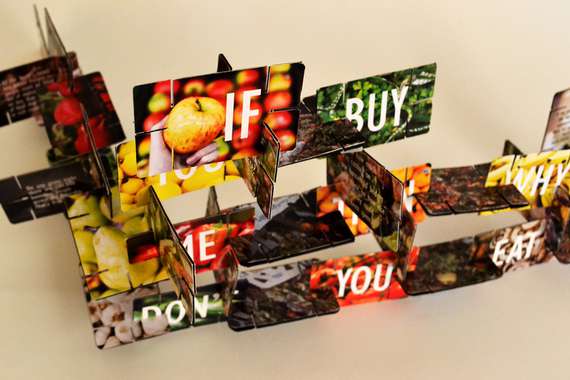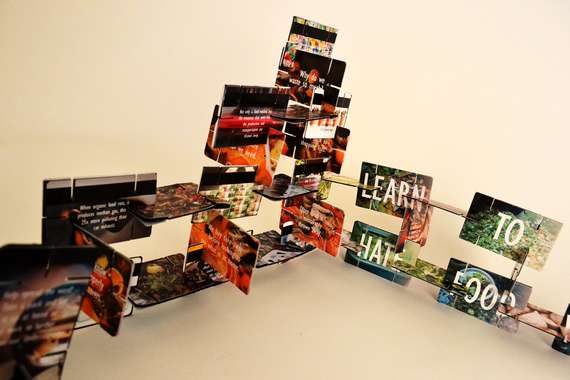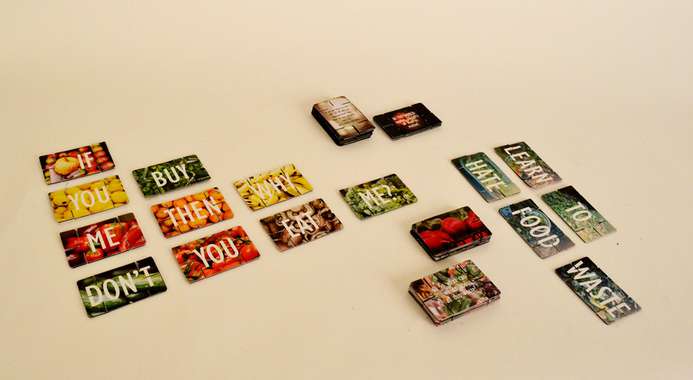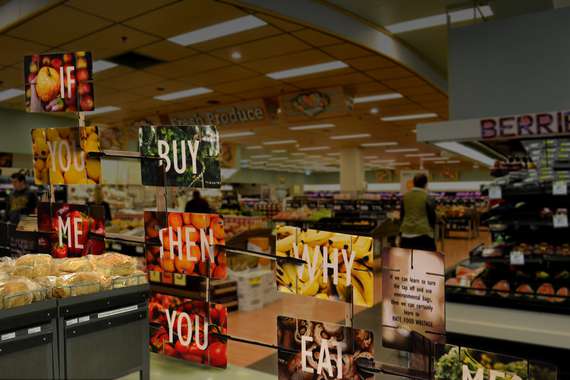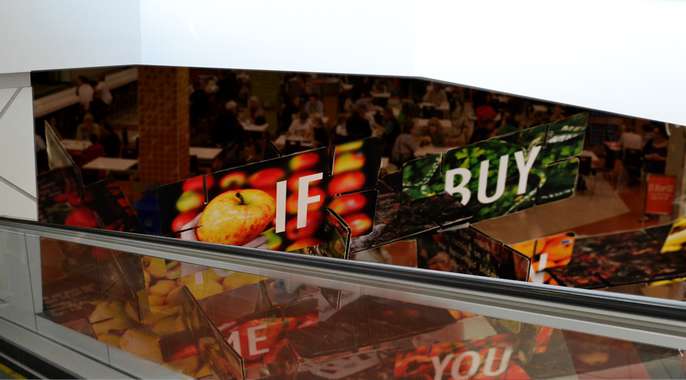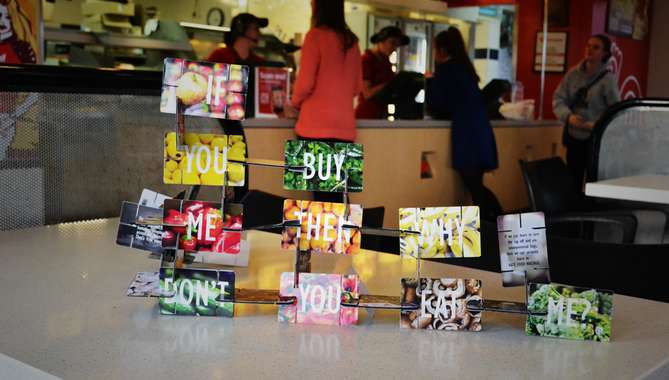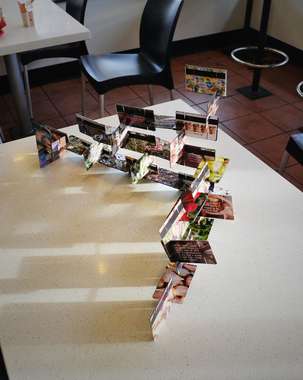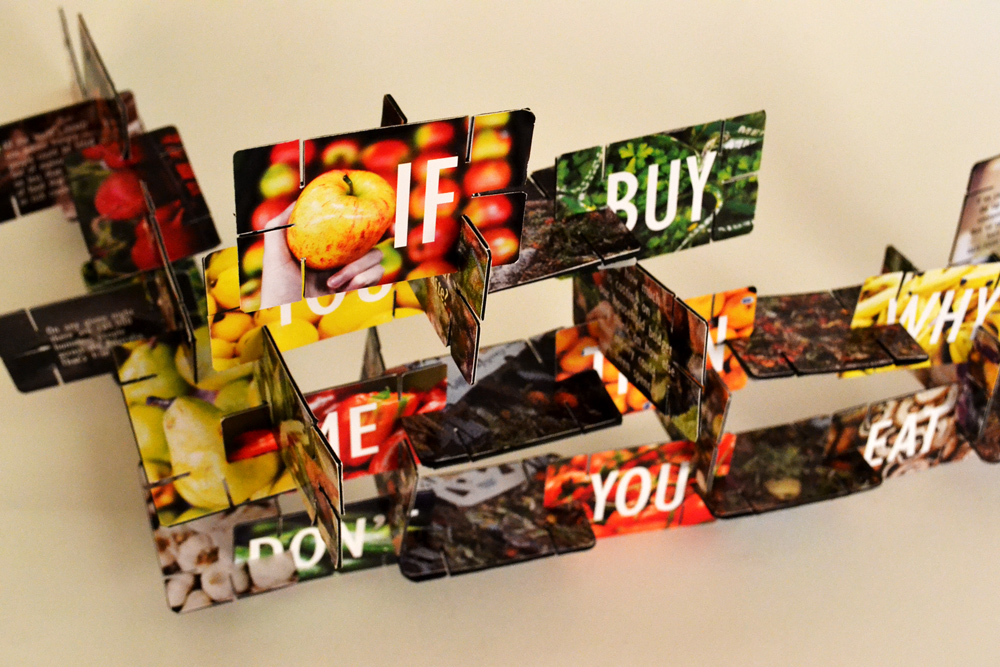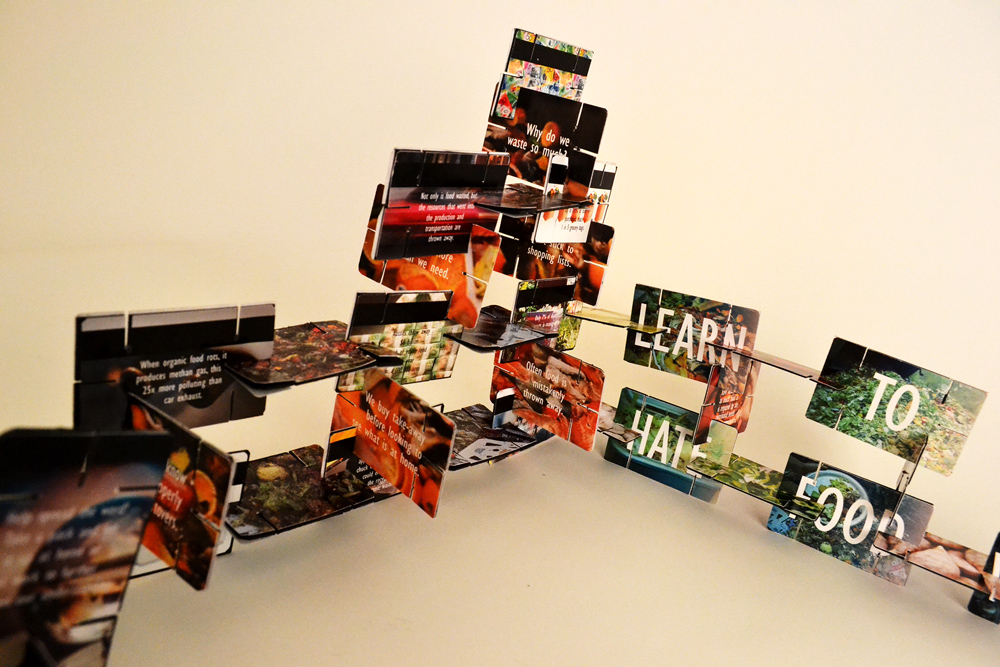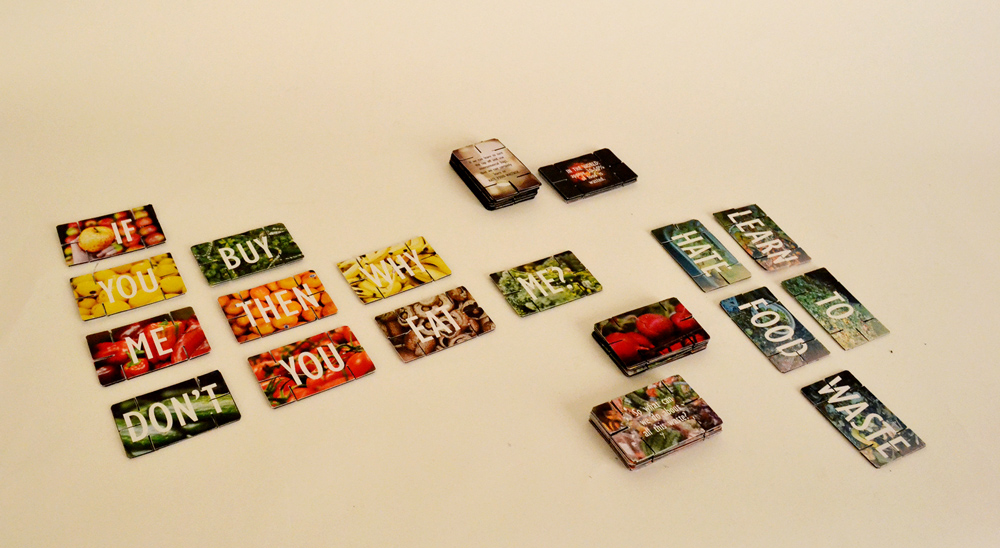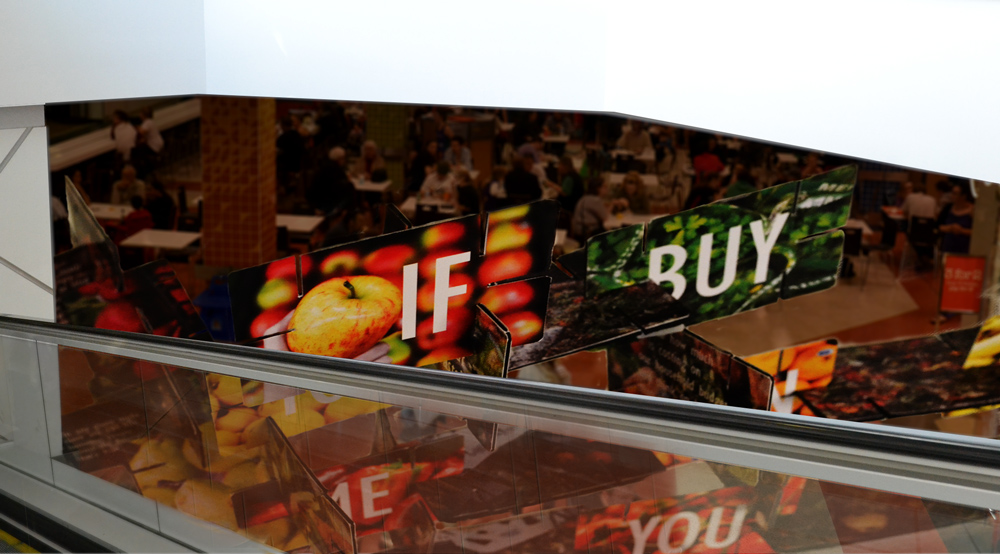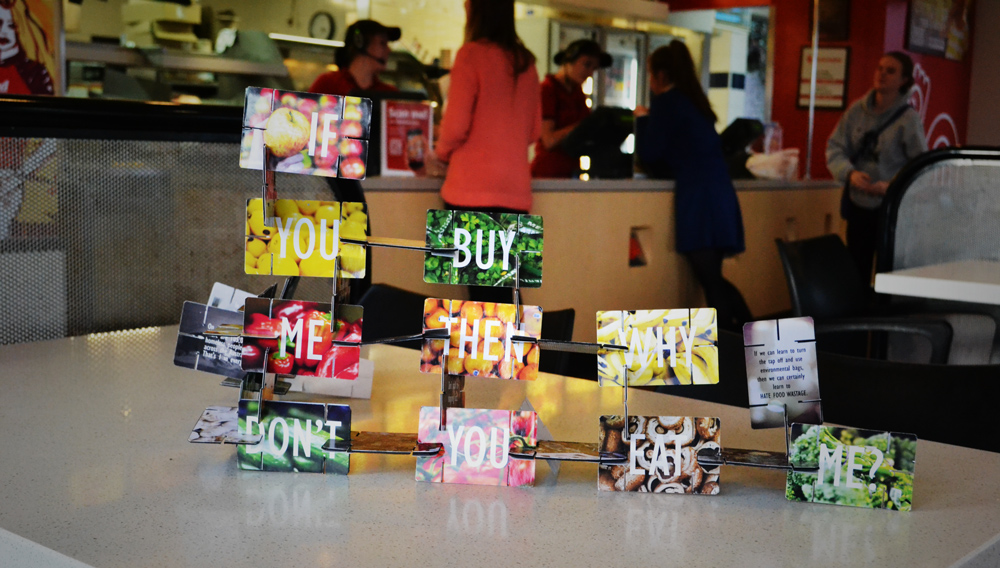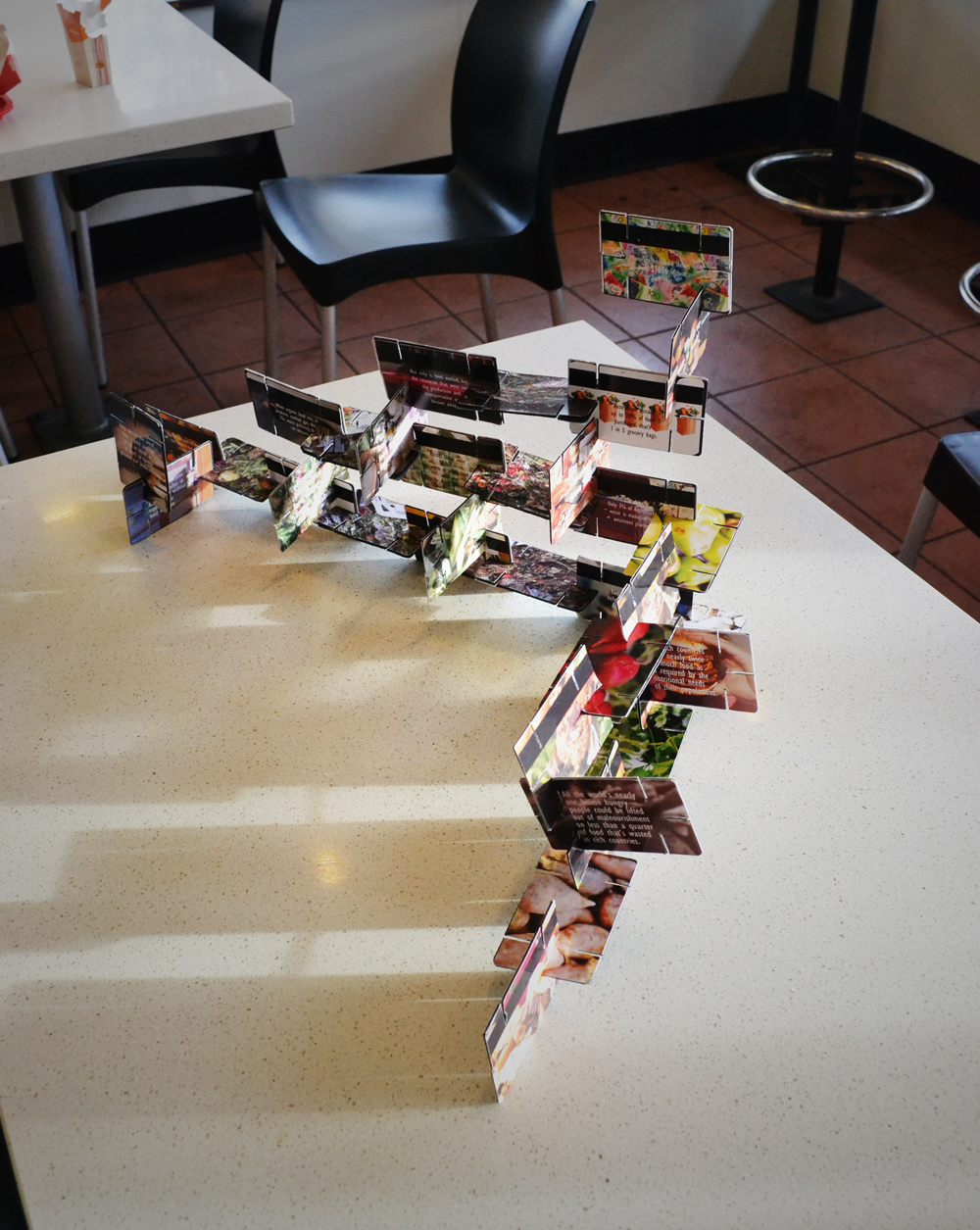If You Buy Me Then Why Don't You Eat Me?
This work has not been commented by curators.
Title
If You Buy Me Then Why Don't You Eat Me?
Headline
If You Buy Me Then Why Don't You Eat Me?
Concept author(s)
Lara Russell
Concept author year(s) of birth
1992
Concept author(s) contribution
Concept, design, printing and construction of the piece.
Concept author(s) Country
Australia
Friendly Competition
Competition category
Visual communication practice
Competition subcategory
static
Competition field
academic
Competition subfield
student
Subfield description
University of Ballarat
Check out the Food Democracy 2013 outlines of Memefest Friendly competition.
Description of idea
Describe your idea and concept of your work in relation to the festival outlines:
In response to the theme of FOOD DEMOCRACY, I have created a hybrid sculpture on the idea of consumer waste when it comes to food. Working as a cashier in a fast-food restaurant for the past four and a half years plus, I have seen an enormous amount of food wastage by – not only staff under policy – but customers throwing out the food they have bought. Since day one of working there, I have always thought upon and expressed my concerns with my fellow work mates on; if people buy food - spent their money on it – then why do they throw it away? Hence the title of my work: IF YOU BUY ME THEN WHY DON’T YOU EAT ME? This intention has been created through a system of inter-locking pieces, resembling debit cards – tapping into the notion of how food has become in a sense an item that can be just purchased; a mass-produced product that is always in supply and the soul of the food is lost through its genetically modified process. The sculpture – sitting in height of approx. 3metres – allows for the public to not only read the information on food wastage in Australia, yet allows for them to move around the pyramid shape, read from different angles and even sit within the sculpture. Not only does the sculpture provide information on statistics on food wastage, but there is also information on why we do and what we can do about it: making it an all-in-one information system.
What kind of communication approach do you use?
I have created a hybrid sculpture allowing for the audience to immerse themselves in on both a visual and kinaesthetic level.
What are in your opinion concrete benefits to the society because of your communication?
The concrete benefits that society will receive from this sculpture are that it reveals the facts on how much we waste – not only in food, but as it extends in money. People know that they waste food, yet I don’t believe that they know just how much until it is all piled together. My intention is to unveil the facts, why we do and what we can do about it in order for people to act upon the situation. It may not change overnight; nonetheless, bit by bit I hope people will change their attitude towards the problem.
What did you personally learn from creating your submitted work?
I have personally leaned from creating this work about the extent of our waste, not only in Australia, but in the world. And how much it costs us; as individuals, households, communities and the sustainability of our planet.
Why is your work, GOOD communication WORK?
My work is good communication work as it engages with the viewer in a visual and kinaesthetic sense. It allows for the audience to immerse themselves in the facts in a direct manner as well as presenting options to go about the problem.
Where and how do you intent do implement your work?
I intend to implement my work in places where food wastage occurs – such as in food courts, restaurants, etc… and also where food wastage begins, in places such as supermarkets or even farmers markets. There would have to be a clear floor space, yet as a sculpture is an “L” like shape, this allows for it to wrap around corners or have tables and chairs, produce stands or anything else to be situated within its precinct – encouraging people to enter the space and immerse themselves in the message of the work. As people can take a miniature version with them, this can be very simple way to spread the message into everyday living spaces.
Did your intervention had an effect on other Media. If yes, describe the effect? (Has other media reported on it- how? Were you able to change other media with your work- how?)
No; however, setting the miniature size sculpture up at work received a few curious looks from customers.

